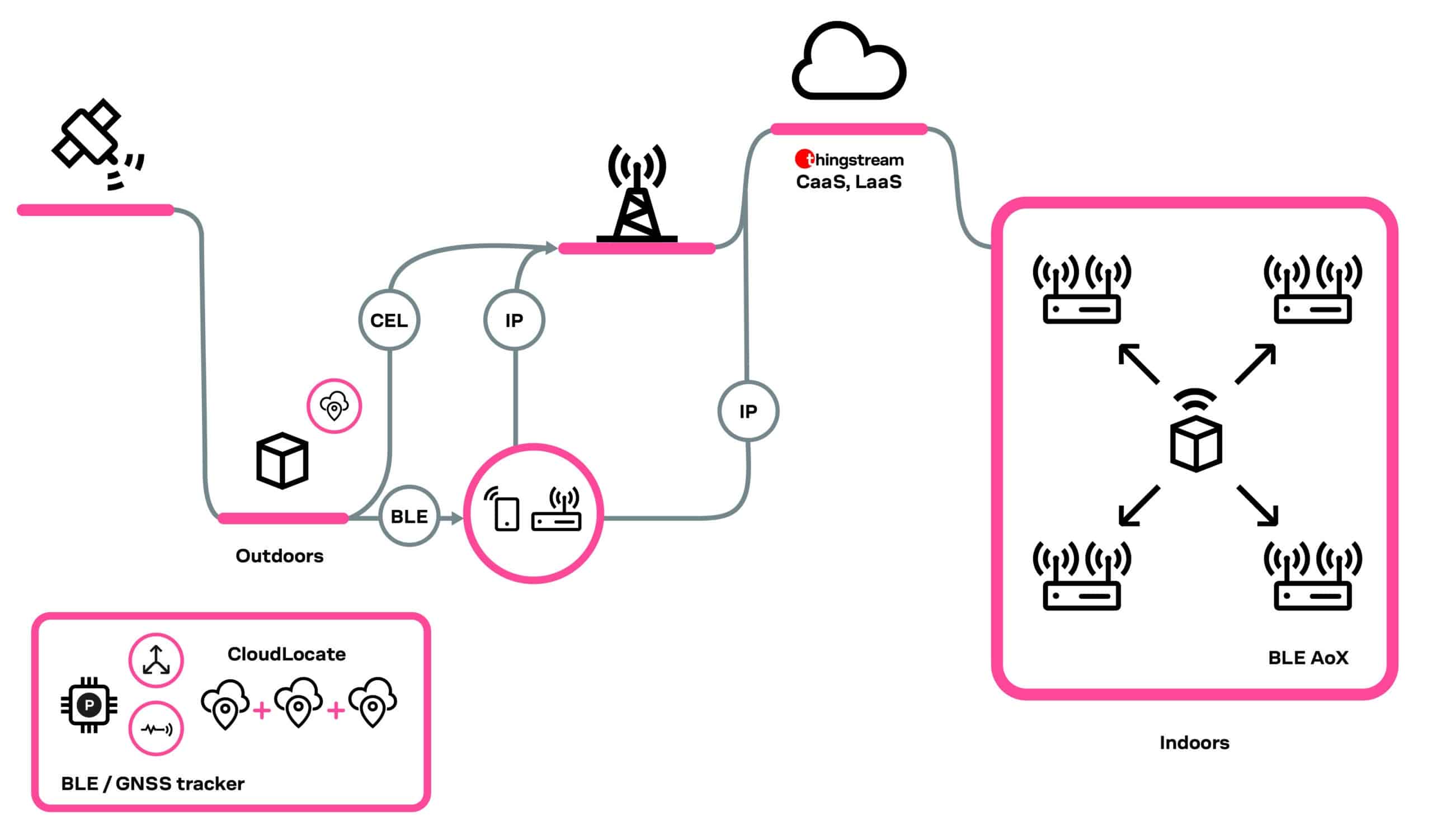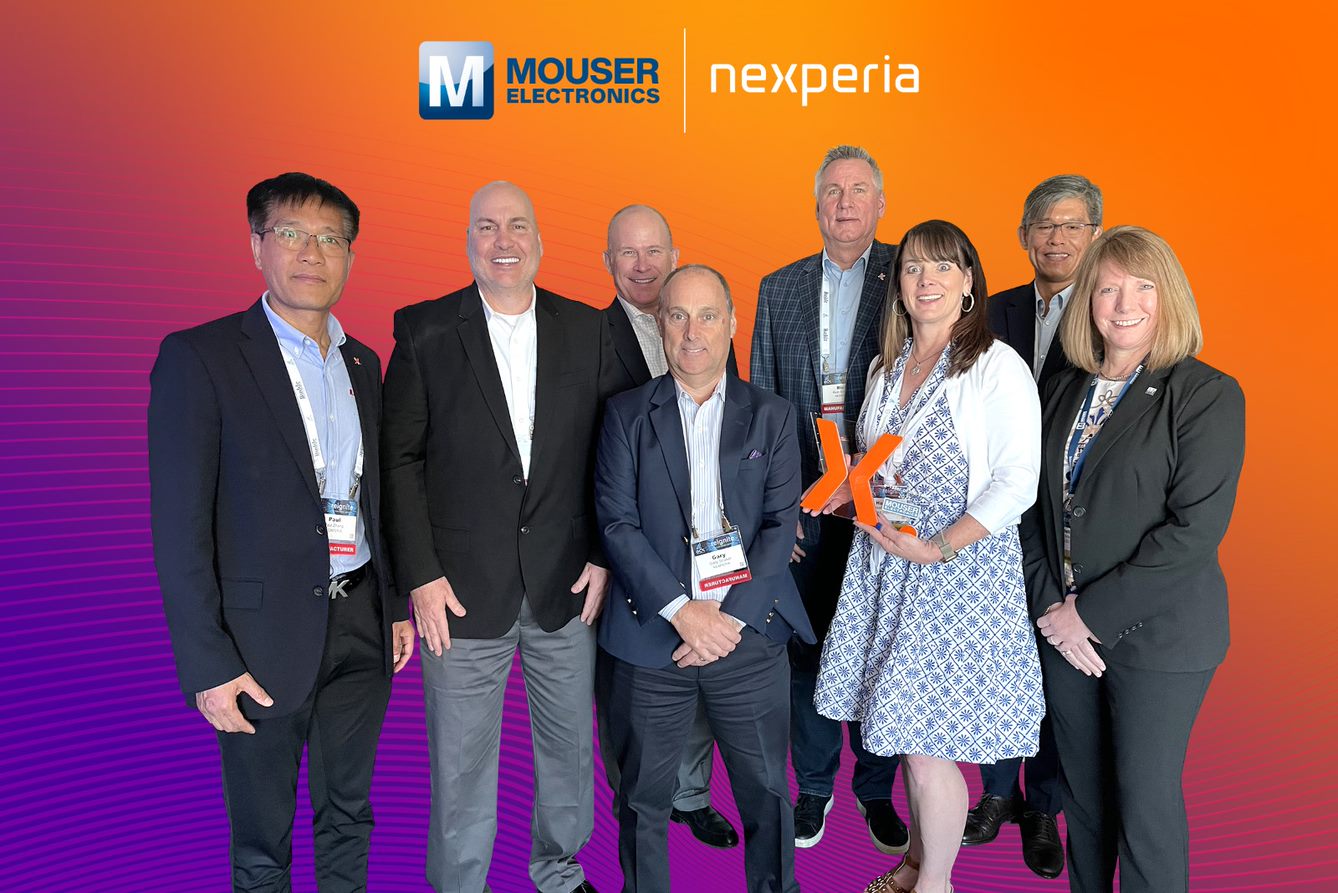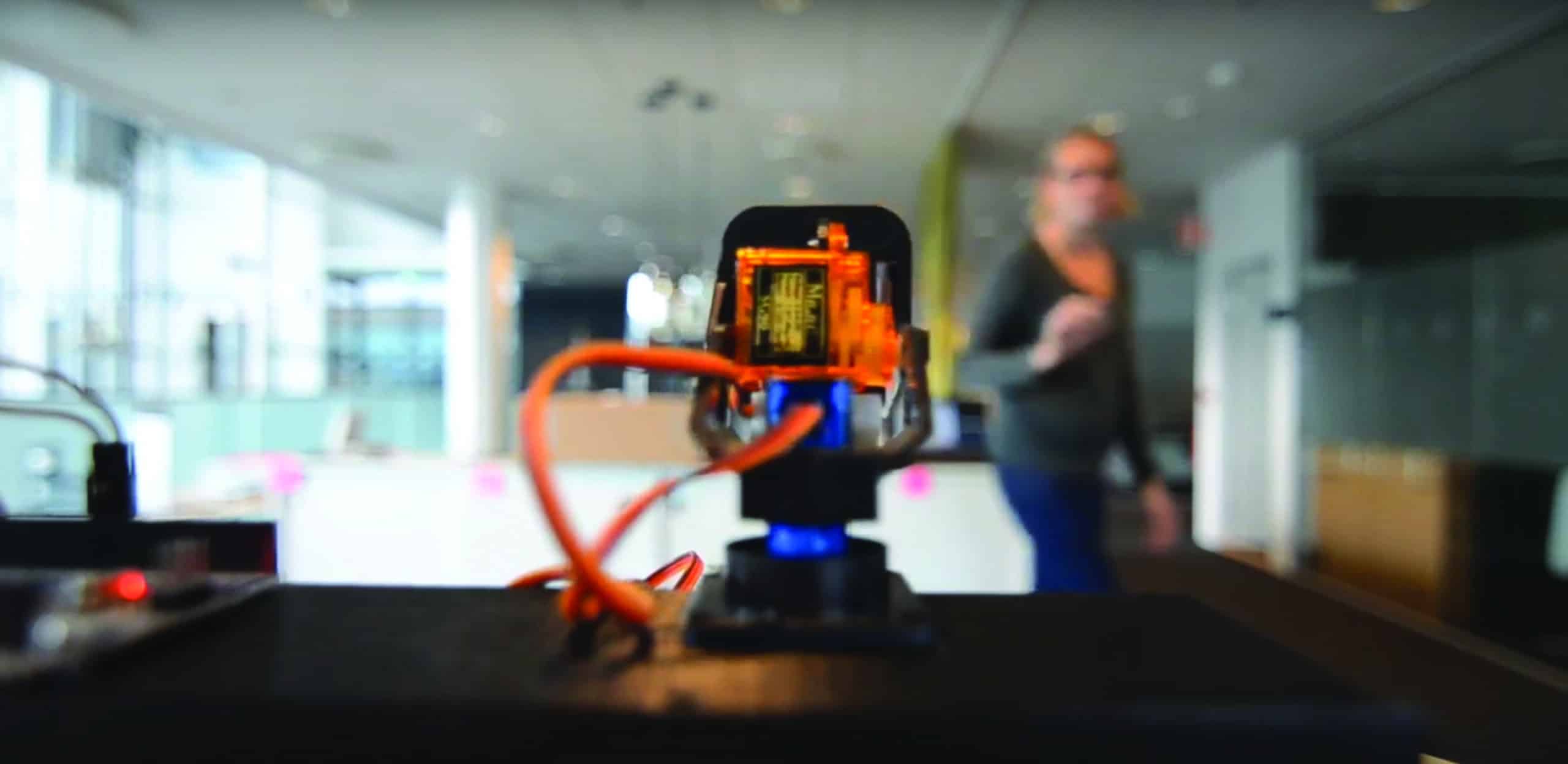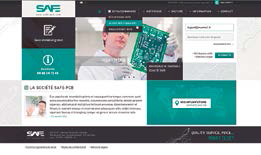Recent innovations have been positive for providers and end users of tracking solutions. And there's more news on the way.
Diego Grassi, Senior Principal Application Marketing, Industry and Consumer IoT at u-blox
Just a decade ago, not knowing the exact whereabouts of our children, pets, or vulnerable family members was simply part of our lives. The same was true in business: from the moment a valuable shipment left until it reached its destination, it was totally impossible to know exactly where it was and what condition it was in.
Today, this lack of visibility is increasingly viewed as unacceptable, wasteful, or just plain irresponsible.
Thanks to the widespread adoption of tracking devices based on GNSS (Global Navigation Satellite Systems), in our cars, phones and wrists, but also throughout the logistics chains of companies, IoT trackers have made it possible to control everything at all times. what we value Algos has been profitable: The most tech-savvy companies have quickly translated the visibility of tracking devices into higher levels of efficiency and revenue.
However, as is often the case, there is no one-size-fits-all solution. IoT trackers come in many shapes and sizes and are based on a growing catalog of technologies to accommodate the specific constraints of the applications they are targeting. Device size, positioning accuracy, autonomy, update frequency, required message sizes, latency, scalability, solution complexity, maintenance requirements, upgrade options, service availability, and cost are just a few of the many limitations that have to balance device manufacturers when developing tracking solutions.
The good news is that, with the right knowledge, today's device developers can choose from a growing range of technology solutions to build smaller and better hardware solutions, streamlining and simplifying back-end integration of IoT platforms. the cloud and reduce the total cost of product ownership while expanding your margins.
In this article, we take a look at some of the top applications we can see in industrial asset tracking, explore the technologies they are based on, and help decipher some of the major trends driving the market.
The many components of IoT tracking solutions
Knowing exactly what, when and where people and assets are located in time can help keep them safe and secure, as well as detect and address inefficient processes and improve planning.
Taking advantage of this value with IoT tracking solutions requires the use of a set of technological components:
- Tags: All assets under monitoring must incorporate tags capable of detecting the data necessary to determine their location using a positioning system.
- Positioning system: The positioning must cover the entire desired area. It can be formed, for example, by orbiting satellites such as those used by GNSS systems (global navigation satellite systems). Other possibilities consist of the use of existing cellular network base stations, Wi-Fi access points or locally installed beacons. The positioning system can have additional services that we will explore later.
- Positioning engine: The positioning engine translates the physical measurements made by the tags or infrastructure, as well as additional information, into an estimate of the exact location. The positioning engine can work, for example, on the label, on a local processor or in the cloud.
- Wireless communication with the cloud: For location data to be useful to the end user, real-time IoT tracking solutions require a wireless communication channel with local or cloud-hosted tracking software. Depending on the application, the tags can transmit data directly to the cloud or through a mobile phone or locally installed wireless gateway.
In general, IoT trackers need optimal power efficiency across all their core hardware blocks and a wireless communication channel to the cloud that is low power, open standard, secure, scalable, and portable.
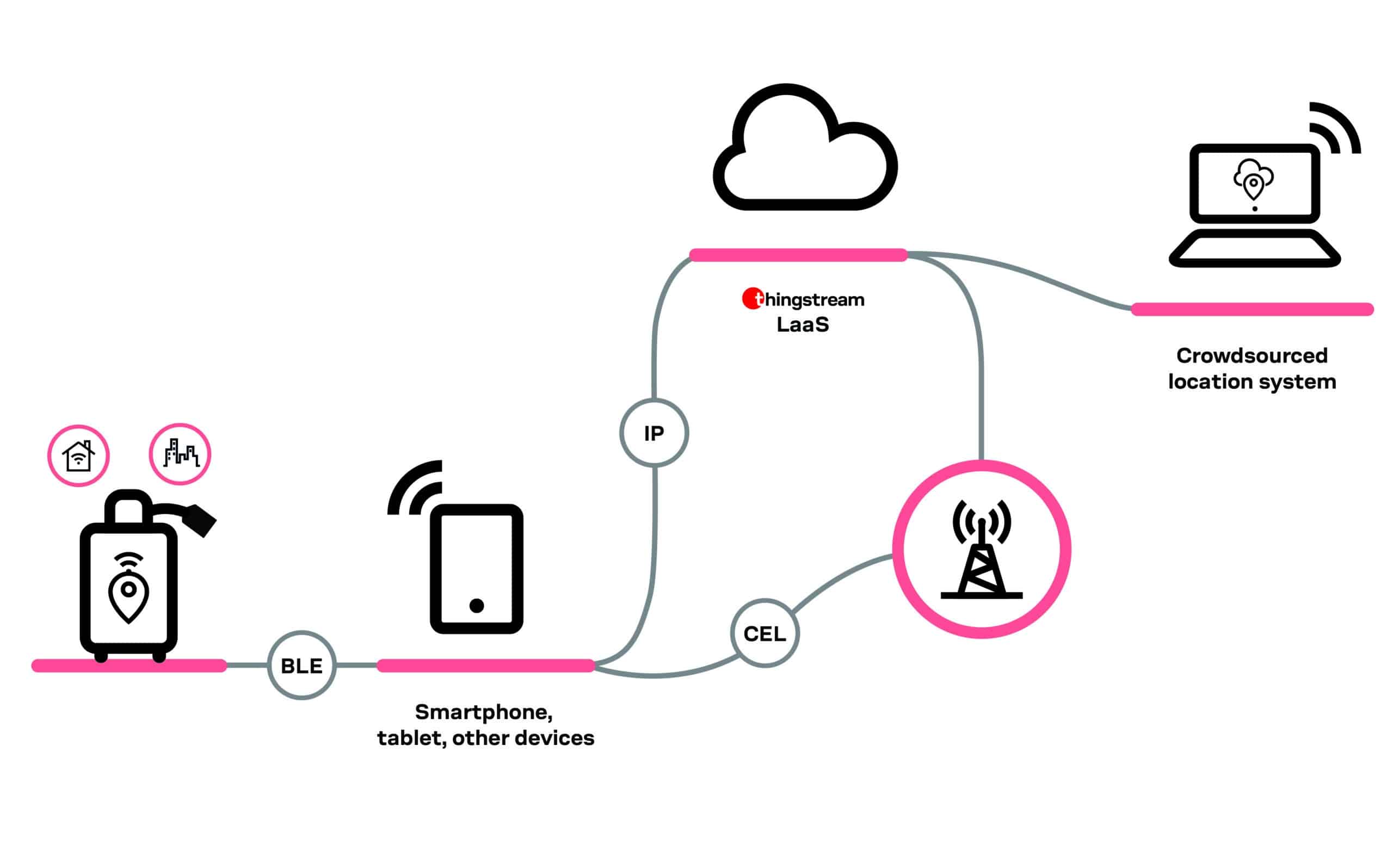
Selection of IoT tracking applications
IoT trackers can now be used to monitor the location of just about anything in real time. Below we'll look at a set of tracking applications that illustrate the diversity of solution architectures and their performance specifications.
People, Pet and Livestock Trackers
People, pet, and livestock trackers are often small, battery-powered devices that are worn on the body and are often used outdoors. Although their requirements vary in each case, they usually offer a positioning with a medium or high accuracy with a medium or high update rate of the position.
Consumption optimization is essential to guarantee a high level of service availability between loads. Since they are used in changing outdoor environments, they often require an IoT SIM card and a cellular data connection to send data to the cloud.
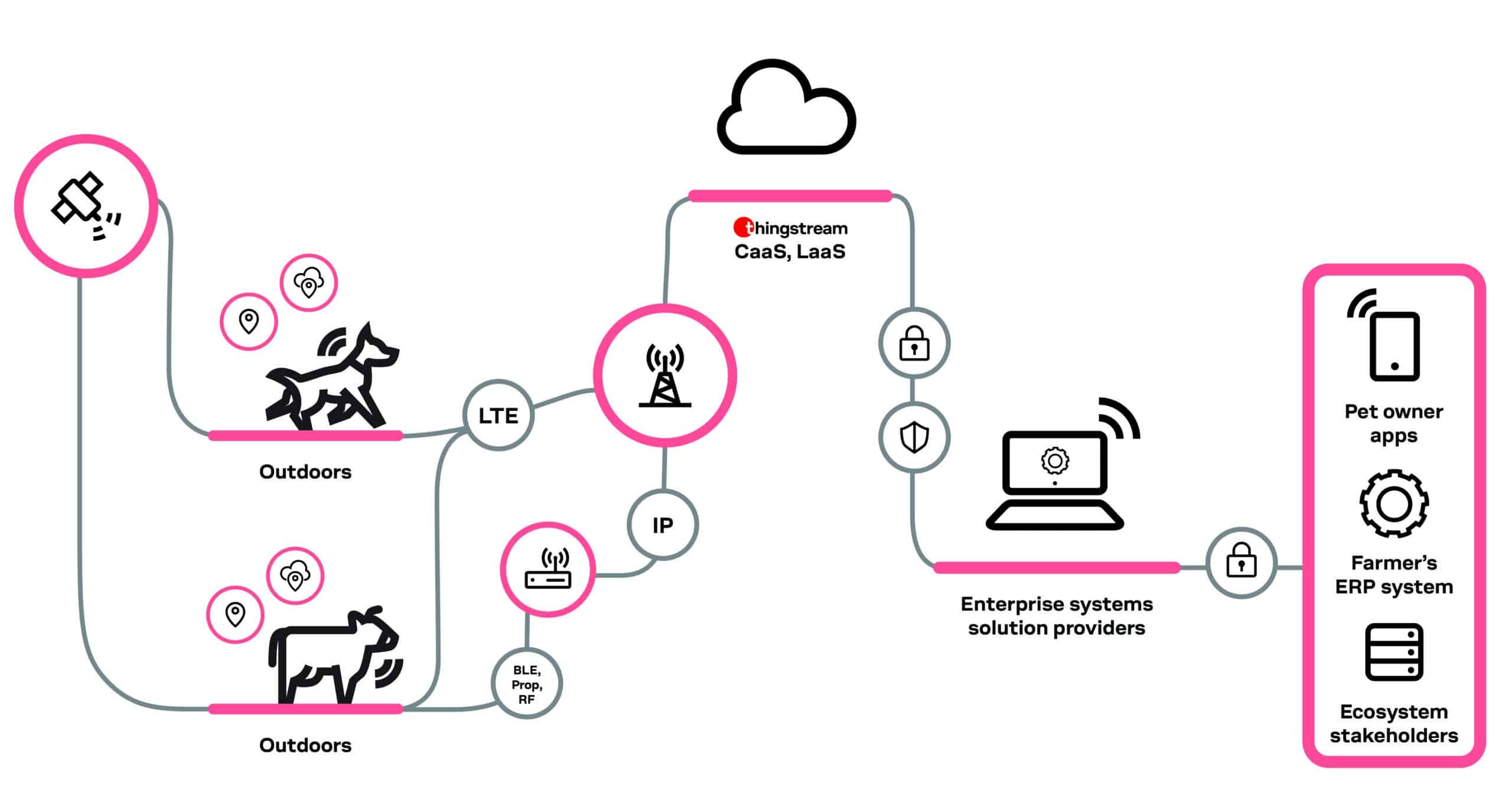
Container trackers for moving goods
Moving goods container trackers are designed to offer maximum autonomy and incorporate various wireless communication technologies. These include low power wide area network (LPWAN) (cellular) connectivity when coverage is available, Bluetooth or Wi-Fi, to a local hub or gateway for satellite communication, and short-range communication for offloading data on
PDA and other similar devices.
To achieve minimal consumption, container crawlers can greatly reduce the positioning update frequency and use a cloud-based positioning engine.
Fleet trackers for cars, electric bikes and micromobility vehicles
IoT trackers used to indicate the position of fleets of micromobility vehicles in real time can access the vehicle's battery. Since their output is often used for billing and compliance with traffic regulations, vehicle fleet trackers need exact positioning in complex urban environments.
Cellular network fingerprinting and assisted GNSS can shorten the time it takes to determine the vehicle's position and lower fuel consumption. At the same time, estimated navigation solutions can integrate inertial sensor data to account for interruptions in GNSS coverage and mitigate the impact of multipath effects caused by GNSS signals bouncing off buildings before reaching the GNSS receiver.
To meet regulations such as no-go zones and speed limits, solutions are evolving from standard GNSS technology with accuracy to the order of meters to estimated navigation multiband solutions using GNSS correction services to achieve an accuracy of just a few centimeters. These solutions often require medium-bandwidth cellular communication technologies to transmit location data to the client in the background and constantly receive GNSS correction data.
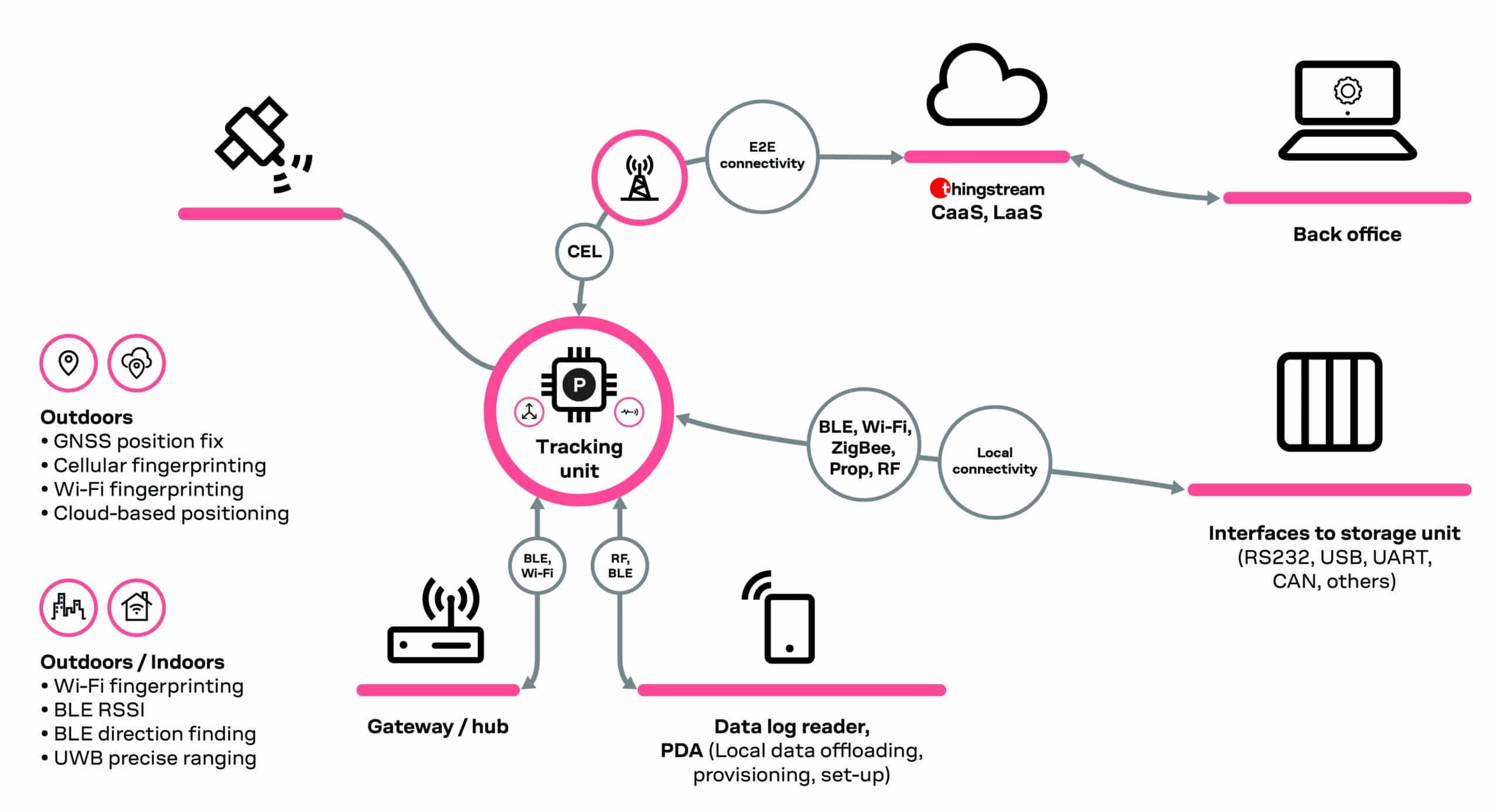
Power Tool Trackers
Power tool trackers need positioning systems and ideally should be able to provide full coverage indoors and outdoors within construction zones. Small size, long autonomy and full availability are key to ensuring that trackers add value to site managers.
For example, these solutions can combine GNSS technology for outdoor positioning and Bluetooth indoor positioning solutions that take over when GNSS signals are not available.
Trends in IoT Tracking Technology
IoT tracking technology has seen tremendous advances over the past decade. Technological progress on the supply side continues to enable applications with ever higher performance. At the same time, the level of customer expectations on the demand side is increasing.
The clearly visible trends on the demand side are:
- demand for greater coverage, both geographically and in mixed indoor-outdoor settings,
- better performance in terms of accuracy and reliability,
- less consumption for longer battery life or smaller device size,
- tighter integration with a shorter BOM and fewer suppliers to manage the supply chain situation,
- shorter time to market
- and lower cost of ownership.
Fortunately, innovation evolves rapidly on the supply side with improvements in coverage, performance, consumption, and technology integration with each technology generation.
Outdoor location coverage it has increased with the introduction of multi-constellation GNSS receivers that connect to a greater number of satellites than conventional GNSS receivers, even when surrounded by tall buildings in highly urban environments. Assisted GNSS has cut the time it takes for a receiver to get to a first fix to just a few seconds. Cellular fingerprinting techniques have virtually eliminated position zero situations.
Indoor location coverage it has also been enhanced with the increasing adoption of Bluetooth direction sensing and indoor positioning as well as ultra-wideband technology.
At the same time, wireless connectivity solutions offer greater coverage with LPWAN (low power wide area networks) whose range is greater than standard 4G LTE consumer networks, while mesh-based short-range solutions extend the transmission range to trains, container ships and different types of carriers cargo used in warehouses.
Positioning performance it has also grown continuously, fueled again by the widespread use of multi-band and multi-constellation GNSS receivers, high-precision positioning solutions such as real-time kinematics, and a growing offering of GNSS correction services to obtain positioning with precision of centimeter order. Estimated navigation technologies that combine vehicle sensor and inertial data with GNSS receiver output and dynamic models of each vehicle reduce the impact of multipath effects and GNSS signal outages.
The autonomy It has been increasing thanks to the convergence of various technological developments. Among them are more sensitive antennas, lower power components used to design GNSS receivers, and 4G LTE cellular radios. Cloud-based positioning is opening up new opportunities for very low-power GNSS positioning in applications that only need to determine their location sporadically. And innovations like multi-constellation GNSS and assisted GNSS shorten the time the GNSS receiver needs to be in power-hungry signal acquisition mode before switching to lower-power tracking mode.
The tightest integration is another trend made possible by the emergence of powerful dual-core microcontrollers capable of integrating a computer controller and BLE (Bluetooth low energy), Wi-Fi, cellular, or other software stack. Moving from complex architectures with a stand-alone application microcontroller and radio technology stacks on separate processor cores to a simpler architecture that integrates everything into a dual-core microcontroller opens up the opportunity to shorten time to market, number of components and suppliers, as well as development times.

This is just the beginning
We are still in the early days of industrial adoption of IoT-based tracking solutions. This technology has clearly demonstrated its qualities. But companies, driven by technological advancement, competition, and unpredictable factors like the current supply chain crisis, are under pressure to create solutions that are both smaller and cheaper, while offering better performance along with easier and faster integration into cloud platforms and ecosystems.
The diversity of the IoT tracking market will mean that solutions continue to be tailored to the specific needs of the applications they serve, based on hardware components, system architectures, cloud-based services, underlying positioning, and capabilities. communication technologies that we have described.
On the supply side, innovation continues apace. Each generation of GNSS receiver technology adds new features that improve performance, coverage, power consumption, and size. Each new version of wireless communications standards helps ensure that data can travel further, faster, or more efficiently. Microcontrollers achieve higher levels of performance. Meanwhile, the cloud is being asked to take on an ever-increasing workload.
Finally, as in the recently announced direction with Bluetooth, completely new technologies are coming to market, including LEO (low earth orbit) satellites for cellular communication and positioning and location using 5G.
As the number of companies that take advantage of the value that tracking can offer through IoT increases, they will also continue to make the range of technology solutions to meet the needs of the asset tracking market.
